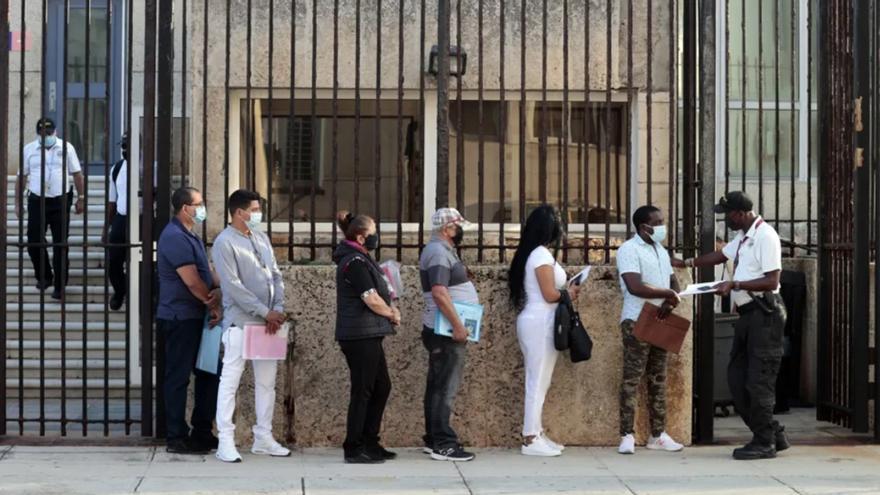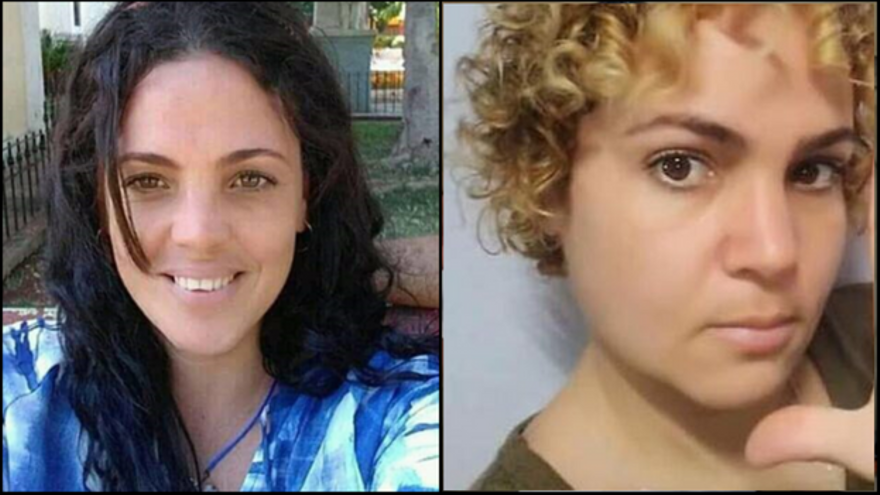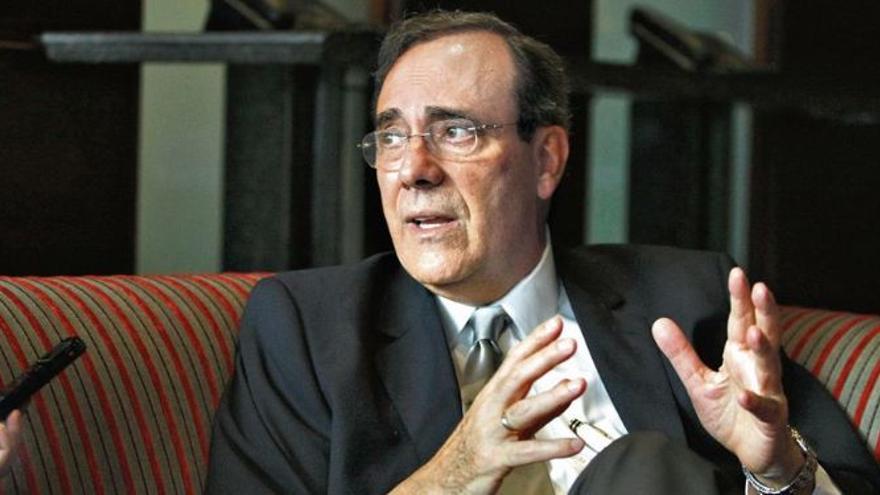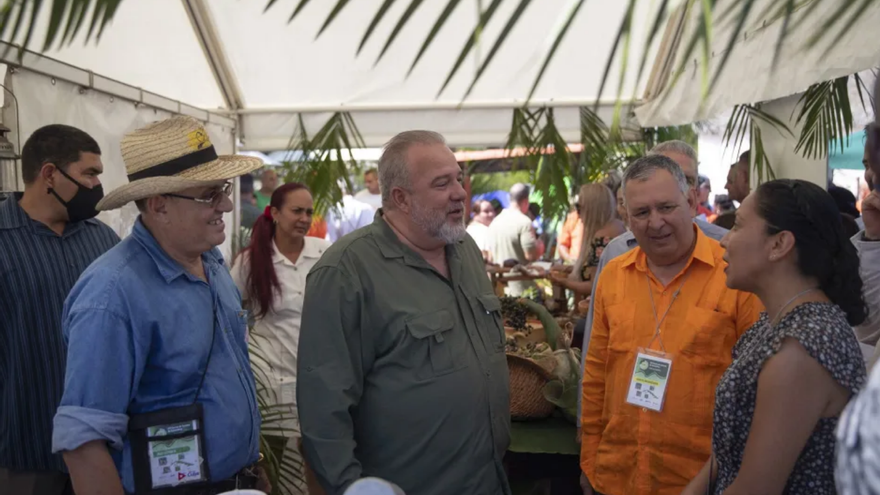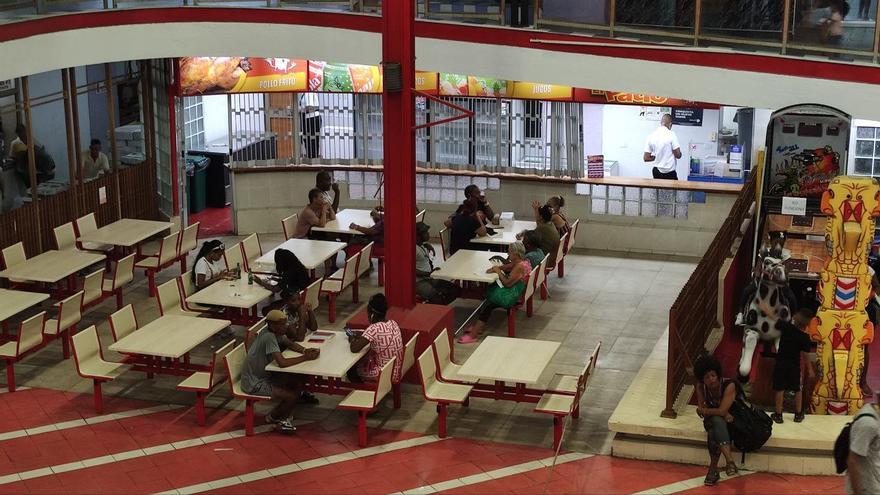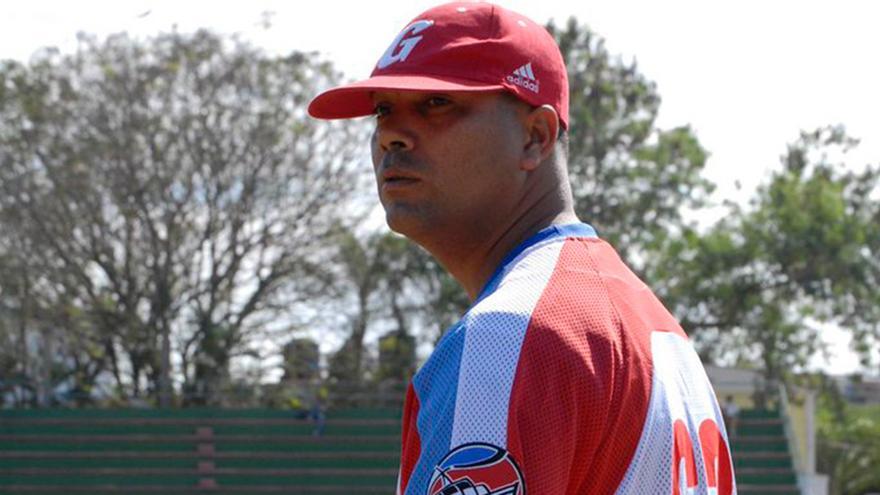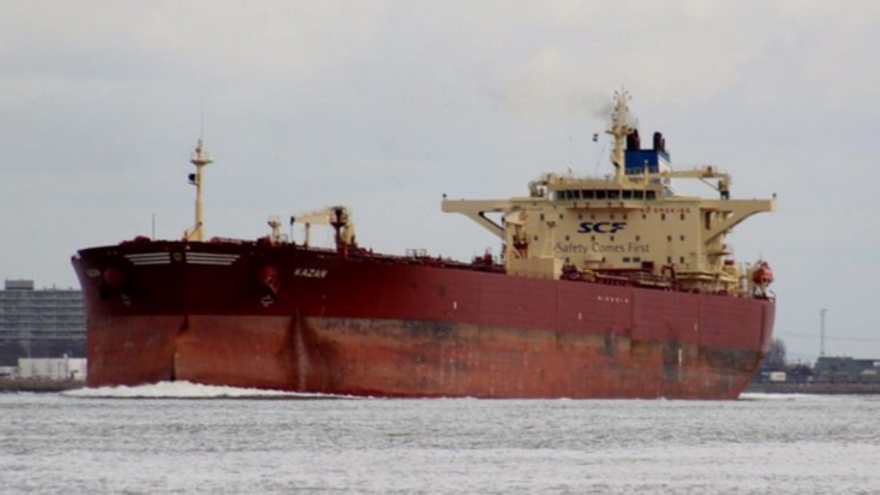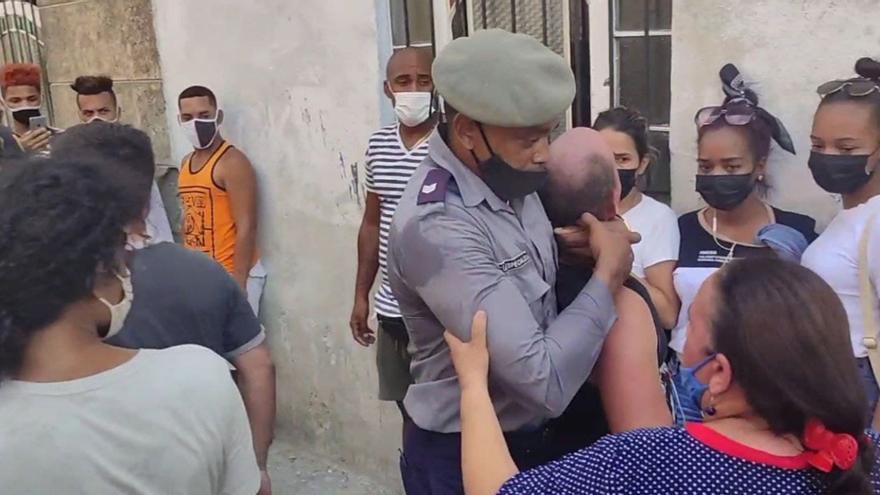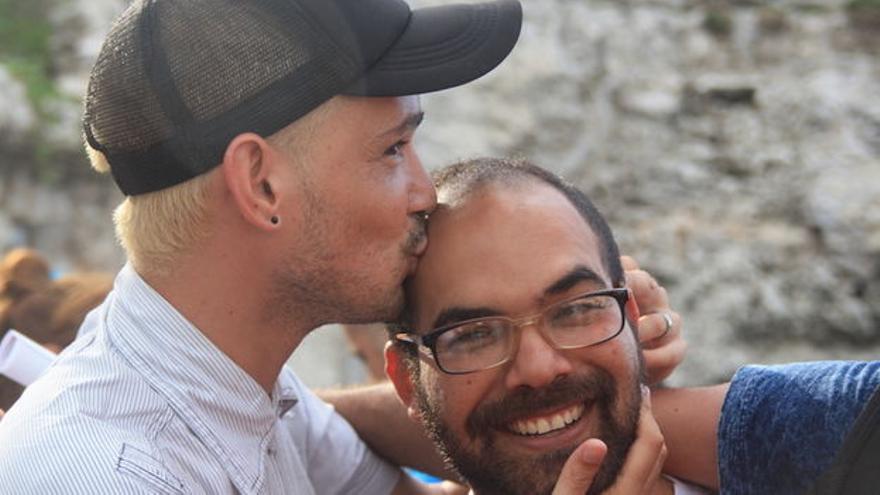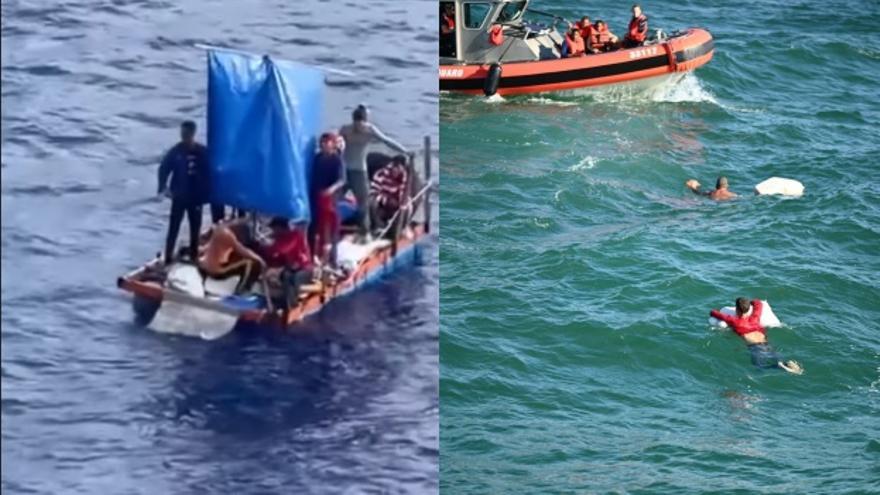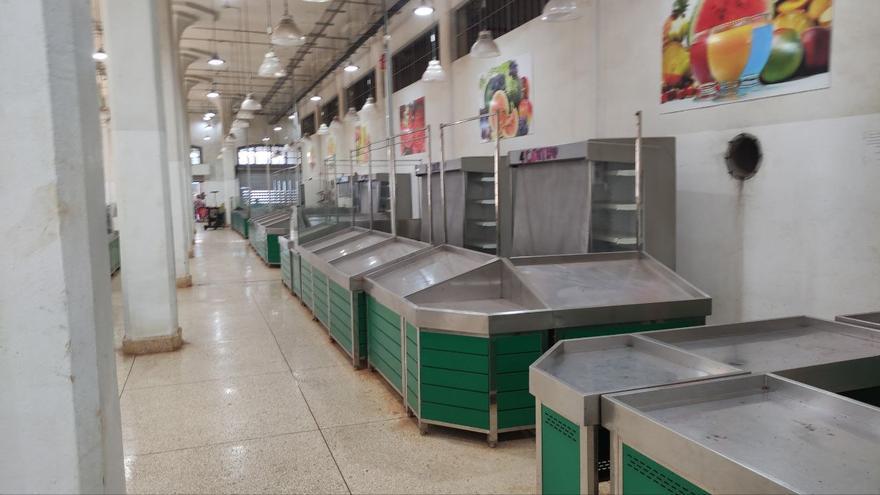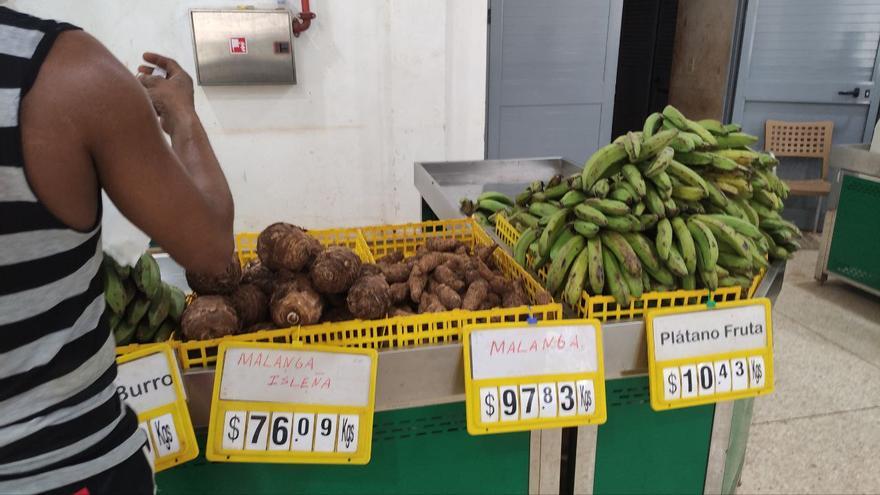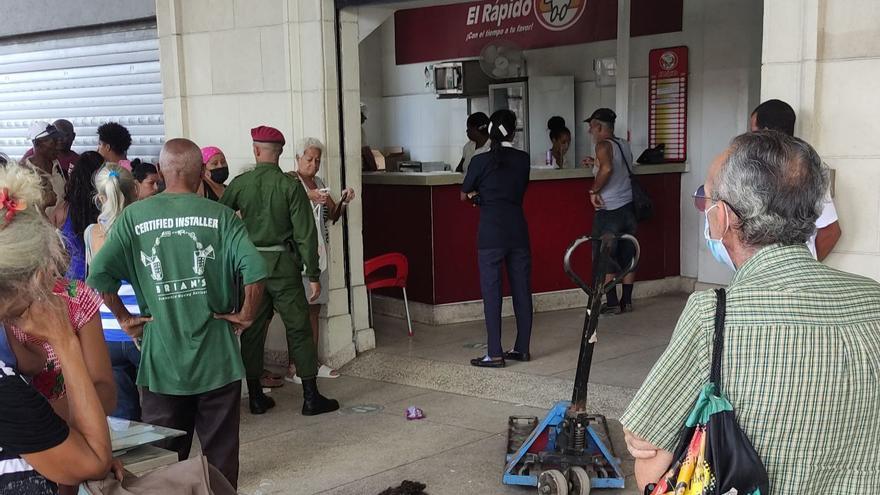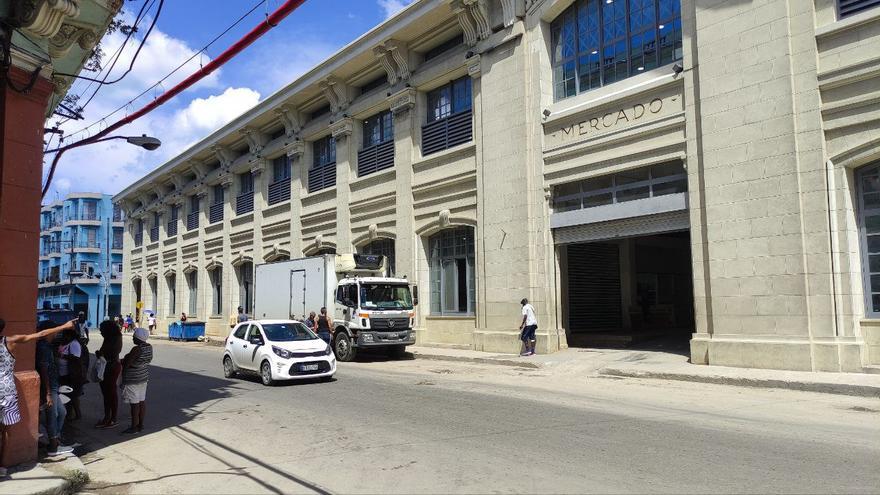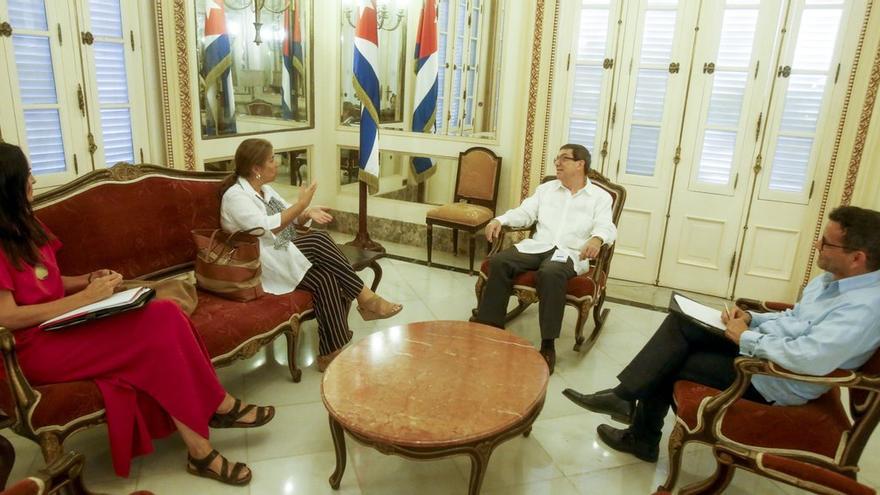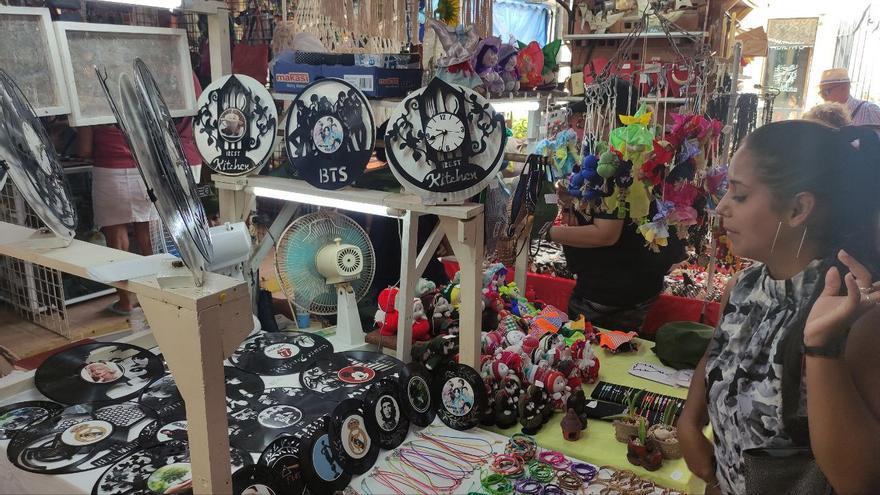
![]() 14ymedio, Havana, September 19, 2022 — Berets with the face of Ernesto “Che” Guevara are relegated to a small corner of the table while in the middle are boxes of matches, super-glue and mobile phone accessories. A few yards from the Plaza de la Catedral in Old Havana, this souvenir stand has had to reinvent itself due to the drop in tourism to Cuba.
14ymedio, Havana, September 19, 2022 — Berets with the face of Ernesto “Che” Guevara are relegated to a small corner of the table while in the middle are boxes of matches, super-glue and mobile phone accessories. A few yards from the Plaza de la Catedral in Old Havana, this souvenir stand has had to reinvent itself due to the drop in tourism to Cuba.
“Most of the people buying things here now are Cubans,” admits 62-year-old Pedro Novo, who has more than twenty-years experience selling handicrafts in the historic heart of the Cuban capital. “What I’m selling now are rattles and refrigerator magnets with images of things that appeal to people here, like soccer team logos and photos of influencers.”
The items most popular with tourists are now relegated to craft fairs located in areas frequented by foreign travelers. The market on downtown 23rd Street no longer carries jewelry made from seeds or images of old Chevrolets that once drew customers from the Habana Libre hotel a few yards away. continue reading
A version of that market can be found a little further away in El Quijote park. The merchandise here, however, is geared more to locals than to foreigners — leather sandals, decorative plates with floral motifs, small earthenware gifts — though the face of the Argentine guerrilla leader, or the odd olive-green baseball cap, still pops up from time to time.
“Three years ago our biggest sellers were wooden keys, little drums, statuettes of old men in hats, and any souvenir that would appeal to tourists,” says Randy, a young artist and graduate of Havana’s San Alejandro academy who supports his family by making wood carvings for several souvenir vendors.
“After the pandemic we had to shift gears because the Cuban buyer is not looking for the same things. Who’s going to be interested in a wooden plaque with ‘Hasta la Victoria Siempre*‘ [Ever Onward to Victory] inscribed on it? No one who lives here… These days I’m finding it easier to sell wooden spoons and forks for the kitchen than a carving of the Capitol.”
Near the Plaza Vieja, a makeshift display provides evidence of vendors’ eagerness to get rid of things they are having a hard time selling. “Three for the price of one,” reads a small sign in front of a tobacco sculpture with Fidel Castro’s profile carved into it. Berets with “comandante” insignias have also been reduced to 150 pesos apiece. The other items on display are pet collars and spirals of mosquito repellent.
The most astute vendors are able to change with the times, which currently means fewer foreign visitors and worsening food shortages. Behind a counter displaying earrings made from colored beads and wristbands adorned with zodiac signs, a vendor on Obispo Street offers an assortment of “packaged frozen chicken quarters, sausages and cleaned, deboned fish fillets.”
The merchandise, more like that found in a grocery store than a crafts fair, is purchased only after the buyer feels confident and has spent enough time looking at the jewelry. The transaction is completed after the buyer follows the seller’s instructions: “I have already alerted my contact. Just turn the corner, knock on the blue door, give him the money and you’ll be all set.”
Others rely on privately owned restaurants and cafes near Havana Bay to exhibit some of their merchandise on the walls in hopes of attracting the interest the few tourists who might happen to be there. The strategy occasionally bears fruit and customers leave with a painting of Morro Castle or the Giraldilla statue. It depends on how many Cuba Libres they have had to drink.
“It will take time for this market to recover,” says Pedro Novo. “But we’re also learning from this crisis because we had forgotten the Cuban customer. We had focused too much on foreigners and, when tourism declined, we realized we had to produce more for the people here.”
Monetary issues can also pose a problem, however. “Cubans pay in pesos but the peso is always losing value. What I would like is for tourists to be able to pay me directly in dollars because my products are well-made, beautiful and will last for many years on the walls of their house or on a shelf.”
“People are also tired of things that just a few years ago were novelties. There’s a lot of repetition and, when an artisan comes up with something new, everyone else copies it over and over,” he observes. “So we have to come up with other things or I’m going to spend the rest of my life selling matches and Spanish playing cards.”
*Translator’s note: A phrase associated with Ernesto ‘Che’ Guevara
____________
COLLABORATE WITH OUR WORK: The 14ymedio team is committed to practicing serious journalism that reflects Cuba’s reality in all its depth. Thank you for joining us on this long journey. We invite you to continue supporting us by becoming a member of 14ymedio now. Together we can continue transforming journalism in Cuba.

